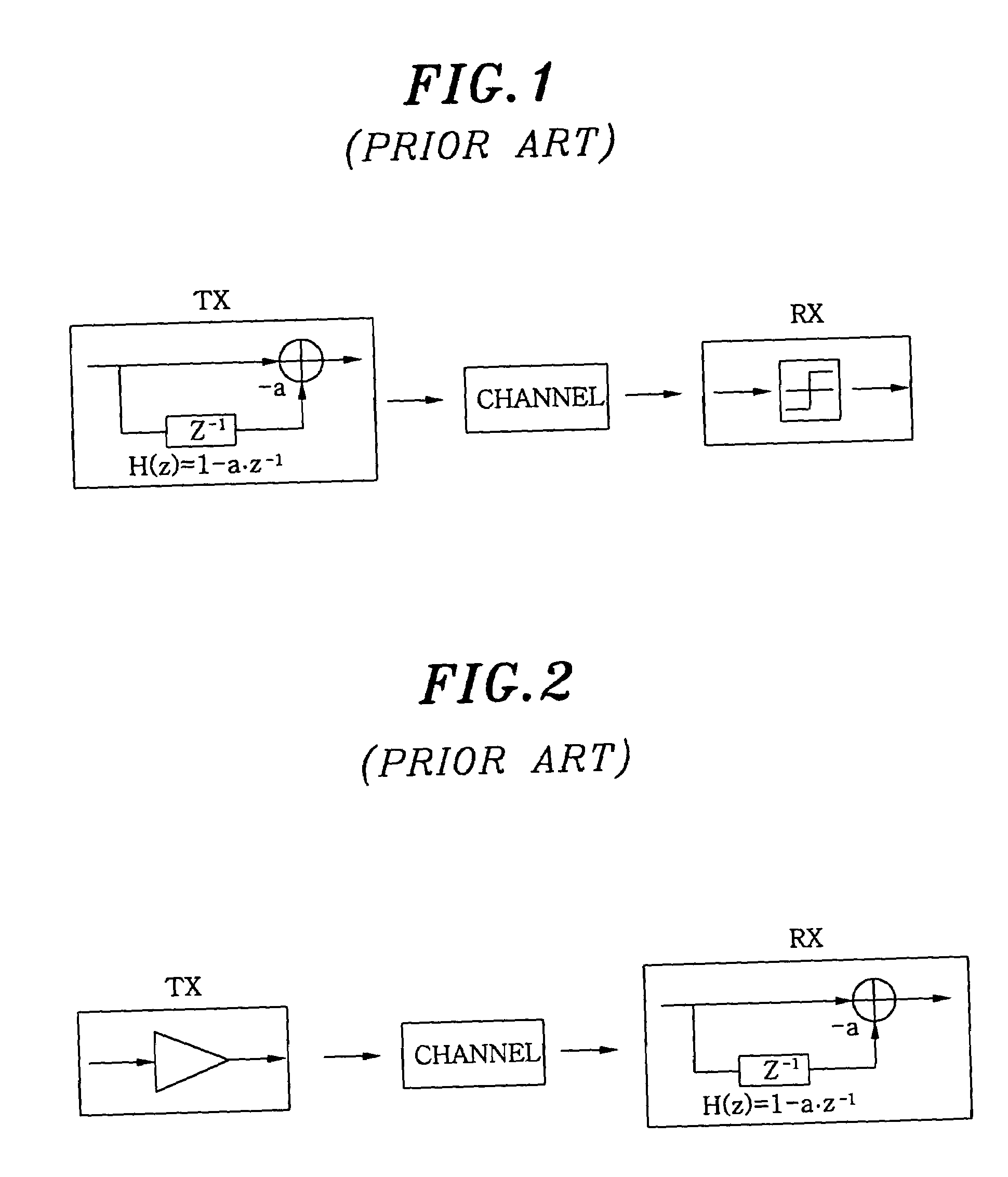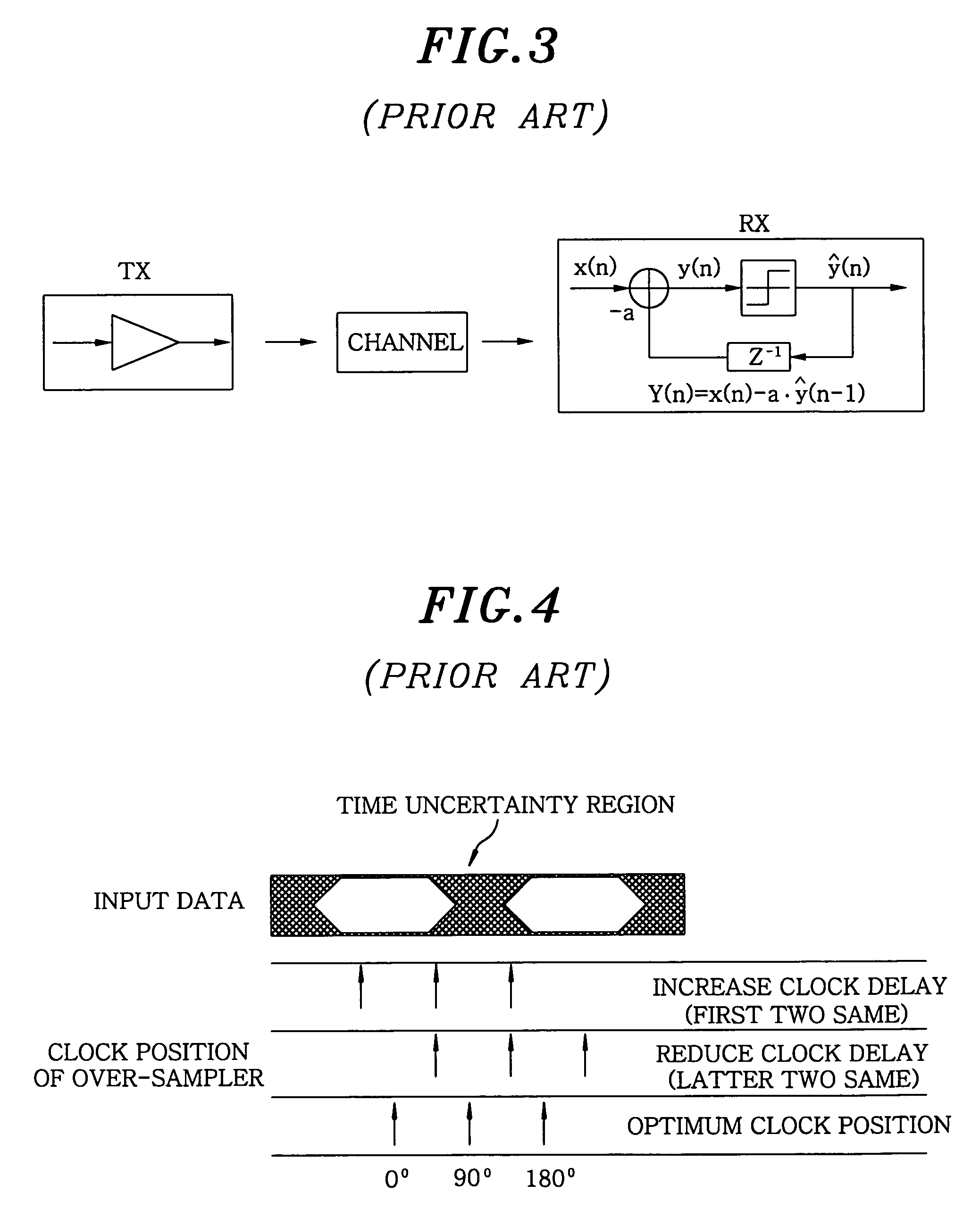Look-ahead decision feedback equalizing receiver
a receiver and feedback technology, applied in the field of i/o interface, can solve the problems of data size margin, insufficient setup/hold time of the receiver circuit, limited data transmission rate, etc., and achieve the effect of high-speed data transmission
- Summary
- Abstract
- Description
- Claims
- Application Information
AI Technical Summary
Benefits of technology
Problems solved by technology
Method used
Image
Examples
Embodiment Construction
[0027]FIG. 5 is a block diagram illustrating a CMOS (complementary metal oxide semiconductor) receiver using a look-ahead decision feedback equalizing scheme in accordance with a preferred embodiment of the present invention. An external data signal with an attenuated high-frequency component is fed to an equalizing block 110 and an external clock signal synchronized with the external data signal is fed to a clock synthesizer 130. Herein, in case a DDR (double data rate) technology is applied to the receiver, the data transmission rates of the external data signal and the external clock signal are 2 Gbps and 1 GHz, respectively.
[0028]The equalizing block 110 equalizes the external data signals and provides the equalized signals to an over-sampler 120 which takes samples of the equalized external data signals at 0, 90° and 180° phase sampling clocks provided by the clock synthesizer 130 (See FIG. 4 and clk0, clk90, clk180 in FIG. 5).
[0029]Then, the outputs of the over-sampler 120 are...
PUM
 Login to View More
Login to View More Abstract
Description
Claims
Application Information
 Login to View More
Login to View More - R&D
- Intellectual Property
- Life Sciences
- Materials
- Tech Scout
- Unparalleled Data Quality
- Higher Quality Content
- 60% Fewer Hallucinations
Browse by: Latest US Patents, China's latest patents, Technical Efficacy Thesaurus, Application Domain, Technology Topic, Popular Technical Reports.
© 2025 PatSnap. All rights reserved.Legal|Privacy policy|Modern Slavery Act Transparency Statement|Sitemap|About US| Contact US: help@patsnap.com



